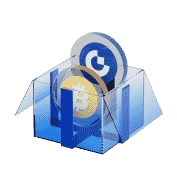- 話題
3k 熱度
270k 熱度
2k 熱度
228 熱度
163 熱度
- 置頂
- ✈️ Gate 廣場【Gate Travel 旅行分享官召集令】
廣場家人們注意啦!Gate Travel 已經上線~ 機票+酒店一站式預訂,還能用加密貨幣直接付款 💸
所以說,你的錢包和你的旅行夢終於可以談戀愛了 😎 💕
現在廣場開啓 #GateTravel旅行分享官# 活動,邀你來秀旅行靈感 & 使用體驗!💡
🌴 參與方式:
1️⃣ 在【廣場】帶話題 #Gate Travel 旅行分享官# 發帖
2️⃣ 你可以:
你最想用 Gate Travel 去的目的地(私藏小島 or 網紅打卡點都行)
講講用 Gate Travel 訂票/訂酒店的奇妙體驗
放放省錢/使用攻略,讓大家省到笑出聲
或者直接寫一篇輕鬆的 Gate Travel 旅行小故事
📦 獎勵安排,走起:
🏆 優秀分享官(1 名):Gate 旅行露營套裝
🎖️ 熱門分享官(3 名):Gate 旅行速乾套裝
🎉 幸運參與獎(5 名):Gate 國際米蘭旅行小夜燈
*海外用戶 旅行露營套裝 以 $100 合約體驗券,旅行速乾套裝 以 $50 合約體驗券折算,國際米蘭旅行小夜燈以 $30合約體驗券折算。
📌 優質內容將有機會得到官方帳號轉發翻牌提升社區曝光!
📌 帖文將綜合互動量、內容豐富度和創意評分。禁止小號刷貼,原創分享更容易脫穎而出!
🕒 8月20 18:00 - 8月28日 24:00 UTC+ - 💞 #Gate广场七夕心意# 💞
組隊秀恩愛 / 單身曬自愛,七夕都有禮!
📅 活動時間
2025年8月26日 — 8月31日
✨ 活動玩法
組隊浪漫 💑
與 1 位好友組成 “心動小隊”,填寫表單報名 👉 https://www.gate.com/questionnaire/7012
小隊需在 Gate廣場 發布原創動態(圖片 / 視頻 / 手繪 / 數字創作 / 文案),內容與 七夕浪漫 + Gate元素 相關,必須添加話題 #Gate广场七夕心意#
小隊總發帖量前 5 名,獲 七夕限定禮盒 + 每位成員 $100 合約體驗券
單身貴族 💌
單人自由投稿,發布七夕相關原創動態
內容需體現 單身獨享浪漫 / 自愛故事,必須添加話題 #Gate广场七夕心意#
自動進入 “單身貴族” 獎池,隨機抽取 10 名,獲 速乾運動套裝
🎁 獎勵設置
心動小隊前 5 名:七夕限定禮盒 + 每位成員 $100 合約體驗券
單身貴族獎池:隨機 10 名,速乾運動套裝
🏆 評選規則
綜合評選維度:創意表現 + 品牌融合度 + 互動熱度
圖片 / 視頻類內容優先
多次發帖可疊加熱度
嚴禁抄襲 / 小號刷量,一經發現取消資格
📌 備注
若因物流等原因導致週邊獎勵無法送達,週邊獎勵將自動替換爲 $100 合約體驗券。 - 🎉 親愛的廣場小夥伴們,福利不停,精彩不斷!目前廣場上這些熱門發帖贏獎活動火熱進行中,發帖越多,獎勵越多,快來 GET 你的專屬好禮吧!🚀
1️⃣ #TokenOfLove# |廣場音樂節打 CALL
爲偶像打 CALL,Gate 廣場送你直達 Token of Love!泫雅、SUECO、DJ KAKA、CLICK#15 —— 你最想 pick 誰?現在在廣場帶上 歌手名字 + TokenOfLove 標籤發帖應援,就有機會贏取 20 張音樂節門票。
詳情 👉 https://www.gate.com/post/status/13214134
2️⃣ #GateTravel旅行分享官# |曬旅程贏好禮
廣場家人們注意啦,Gate Travel 已經上線。帶話題發帖,分享你的 Gate Travel 旅行體驗、心願清單、使用攻略或趣味見聞,就有機會獲得旅行露營套裝、速乾套裝、國際米蘭旅行小夜燈等好禮!
詳情 👉 https://www.gate.com/post/status/13172887
3️⃣ #内容挖矿# |發帖還能賺錢
廣場長期活動進行中,最高可享 10% 手續費返佣!發布優質內容,如行情解析、交易觀點等,吸引更多用戶點讚和評論。若用戶在互動後 180 分鍾內完成現貨或合約交易,你將獲得最高 10% 的手續費返佣!
詳情 👉 https://www.gate. - 📢 Gate廣場 #每周精品内容# 開啓公布啦:發現優質內容,探索投資見解!
每週五精選5篇優質帖文發布於廣場官號,獲得“精選標識”及 $50 合約體驗券,助您提升社區曝光度!
🔥 本週社區精選內容來啦! 一起圍觀大神們的獨家見解👇
1.吉川富郎君 | 行情走勢深度解析 👉️ https://www.gate.com/post/status/13148533
2.flyawei | 最新消息面解讀 👉️ https://www.gate.com/post/status/13211788
3.Crypto eNjoy | ONDO幣種全方位分析 👉️ https://www.gate.com/post/status/13086040
4.AngelCrypto | 比特幣短線走勢研判 👉️ https://www.gate.com/post/status/13205746
5.馬克如Mc | 中國穩定幣發展趨勢深度探討 👉️https://www.gate.com/post/status/13218350
📜 如何發布符合廣場推薦的精品內容帖?
1. 帖文聚焦加密見解,如行業新聞、行情分析、幣種推薦、行業趣事等。
2. 結構清晰,內容詳實,分析精準,語言有趣易懂,圖文並茂。
3. 字數超過30字且內容原創,可附帶相關話題、幣種標籤、交易卡片。
創作者們,請積極發 - 🎤 爲偶像應援 · Gate送你直達 Token of Love! 🎶
家人們,現在在Gate廣場爲 打 Token of Love CALL,20 張音樂節門票等你來瓜分!🔥
泫雅 / SUECO / DJ KAKA / CLICK#15 —— 你最期待誰?快來一起應援吧!
📌 參與方式(任選,參與越多中獎幾率越高!)
1️⃣ 本帖互動
點讚 & 轉發本帖 + 投票你最愛的藝人
評論區打出 “我在 Gate 廣場爲 Token of Love 打 Call !”
2️⃣ 廣場發帖爲 TA 打 Call
帶上 #歌手名字# + #TokenOfLove#
發帖內容任選:
🎵 最想現場聽到的歌 + 心情宣言
📣 應援口號(例:泫雅女王衝鴨!Gate廣場全員打 Call!)
😎 自制表情包/海報/短視頻(加分項,更容易中獎!)
3️⃣ 推特 / 小紅書發帖打 Call
同樣帶上 #歌手名字# + #TokenOfLove#
內容同上,記得回鏈到表單 👉️ https://www.gate.com/questionnaire/7008
🎟️ 獎勵安排
廣場優質發帖用戶:8張門票
廣場幸運互動用戶:2張門票
Twitter 優質發帖用戶:5張門票
小紅書優質發帖用戶:5張門票
📌 優質帖文將根據文章豐富度、熱度、創意度綜合評分,禁止小號水貼,原創發帖更易獲獎!
🕒 8


ZK 如何推動加密資產安全更上一層樓|Foresight Talking「對話創始人」系列實錄
主持人:Frank,Foresight News 研究員
主講嘉賓:Vince Yang,zkLink 聯合創始人
*「對話創始人」是ForesightNews 推出的「創始人」系列Forsight Talking AMA,各個項目的創始人會在直播間分享他們的創業經歷、開發經驗、行業知識儲備、融資歷程、後續產品市場計劃等等。如果你有感興趣的項目/ 創始人,可以在我們官方Twitter(@Foresight_News)下留言並@項目方創始人,我們會篩選熱度高的創始人並邀請到我們Twitter Space 與大家親密互動。 *
本期我們邀請到的嘉賓是多鏈交易基礎設施zkLink 的聯合創始人Vince Yang,前不久zkLink 也剛剛完成1000 萬美元融資,我們此次和Vince Yang 一起了交流如何採用ZK 技術來實現提高加密資產安全性的新方案。
**Frank:首先請Vince 給大家介紹下zkLink,它是什麼時候成立的,目前在做怎樣的事情,已經推出了哪些產品? **
**Vince Yang:**我們正在Build 的產品是市場上第一家多鏈ZK Rollup 協議,主要是使用ZK 技術建立一個多鏈統一的交易基礎設施,目標是改善現有去中心化交易產品的各種痛點,打造和支持下一代去中心化交易所,包括訂單簿交易所,包括同質化代幣和非同質化代幣(NFT)、NFT 交易市場等等。
**Frank:zkLink 的定位是「基於零知識證明的多鏈交易基礎設施」,那零知識證明技術在其中扮演了怎樣的角色? **
**Vince Yang:**zkLink 整個協議採用的是一個經典的ZK Rollup 架構,在經典的ZK Rollup 架構上我們做了一定程度的創新,其中最重要的是兩個方面。
第一個方面是我們不僅連接了以太坊,還連接了多個一層區塊鍊和二層網絡,包括以太坊的側鏈,像我們大家所熟知的BNB Chain、Avalanche、Polygon 等,以及現在非常熱的以太坊擴容方案——ZK Rollup 通用型的擴容網絡,包括大家熟知的zkSync、Starknet、Scroll、Linea 等,以及Polygon 的ZK 擴容方案Polygon zkEVM。
同時我們也正在接入一些非EVM 的公鏈,像Solana,實際上我們已經完成了95% 以上的開發工作,並且開源了Solana 上首個ZK 的驗證合約,但是這個驗證合約目前還沒有跟我們的測試網打通,因為它只支持一種比較簡單的算法,叫做Groth16,這是一種比較輕量級的ZK 驗證算法,而且目前Solana 的區塊鍊主網還不支持更加複雜的ZK 驗證算法。
我們現在所採用的算法叫做PlonK 算法,屬於zk-SNARK 範疇內,也即zkLink 整個網絡和協議與市面上大家熟悉的ZK 通用擴容網絡是相似的,但在架構上有很大區別,因為我們連接了多個一層和二層網絡,有很多個資金的入口,並將統一狀態機的狀態發送到這些不同的區塊鏈上進行同步和驗證。
所以我們比其他一般的通用型擴容網絡有更多的資金入口,也可以直接與這些生態不同區塊鏈上的資產和流動性進行交互。用戶使用我們的產品時,會發現在協議層上,他們可以直接交易不同生態中的資產,並使用一個錢包管理來自不同區塊鏈的資產,這與目前的去中心化交易體驗有很大區別,因為現在大多數DEX 實際上只在一個鏈上有流動性池,即使像Uniswap、SushiSwap 這樣的DEX 在很多鏈上都有部署,但實際上它們在以太坊和BNB Chain 等其他網絡上的部署不是打通的,而是相互獨立的。
比如即使它們都有USDT,但這兩個USDT 實際上不同,交易的時候不同網絡的兩個池子無法合併,同時在交易過程中,你需要使用不同的錢包來操作不同的網絡,尤其是像EVN 網絡和非EVM 網絡這樣的網絡。對於Solana,你必須先下載他們自己的錢包,未來MOVE 生態可能會蓬勃發展,它也有自己的一套地址系統和特定的錢包,對於用戶來說,接觸的區塊鏈越多,需要下載和管理的錢包數量就越多,這是一個用戶使用體驗上的痛點,但我們想改善這個問題,讓用戶可以一鍵交易和管理多鏈資產,這將是用戶體驗上的重大進步。
第一個方面是zkLink 將集成一種支持用戶社交賬戶登錄的智能合約錢包,也即賬戶抽象(AA)。這將為用戶提供無縫的交易體驗,類似於現在中心化平台上使用手機號、郵箱或社交賬戶登錄進行交易的體驗。
在協議層上,用戶可以使用一個賬號和地址管理多個不同區塊鏈上的資產,無需管理私鑰,因為不同的智能合約錢包底層方案不同,如果使用了MPC 技術,用戶的私鑰可以進行分片管理,並且可以設置社交恢復規則,在此情況下用戶的遷移成本和學習成本大大降低,進入門檻也降低了。
同時由於採用了ZK 技術,所以安全性完全跟現在Uniswap 等鏈上產品一致,因為ZK 協議雖然創造了一個鏈下的交易執行環境,但共享的安全性仍然是鏈上的安全性,資金變更和交易執行的有效性是通過零知識證明的數學方式來保證的,也就是說所有資金的變更和交易執行都在鏈上達到最終性,並共享主鏈的共識安全。
如果你現在只接入以太坊這一條鏈,它跟以太坊本身一樣安全,如果你接入以太坊的側鏈,比如接入了BNB Chain,那麼它就會跟BNB Chain 一樣安全。
多條鏈的安全性在這裡有些不同,但是為了保障安全性,我們採用了無信任的設計,在鏈下的交易執行環境中有Sequencer、Prover 這些角色,這跟其他的擴容方案是一樣的,但是在鏈外還有一個叫做見證者的第三方網絡,比如做市商或大戶,他們可以從不同的區塊鏈瀏覽器上讀取鏈下的數據,給鏈上傳的零知識證明和這個狀態進行比較,看是否一致。
如果一致,就可以保證多個鏈上的狀態完全相同,並且它們所收到的信息也是一樣的,這就完全消除了鏈下的執行者、Sequencer 等之間合謀以及鏈上傳遞虛假信息的風險。因為在以太坊上,你不能直接讀取BNB Chain 上面的存款信息,但是通過這種方式,你可以確保網絡裡狀態根與統一狀態是一致的,確保合謀風險幾乎為0。
**Frank:相比其它去中心化交易協議,zkLink 如何實現加密資產的多鏈交易,多鏈架構如何保證安全性? **
**Vince Yang:**我們能夠實現這一點,首先從根本上講是因為採用了零知識證明技術,這種加密密碼學能夠保障安全,在行業中們通常認為零知識證明技術是一種不可逆轉的證明技術,無法被攻擊者破解。
即使是運營者本身,也即鏈下Sequencer 等角色也無法欺騙鏈上的驗證合約,當在鏈下往鏈上傳信息的同時,我需要生成一個證明,這個證明里包含一個prove key,這兩個key 是一一對應的關係,如果你成功配對,那麼你所聲明的信息就是真實的,這個狀態轉換包括你的資金變化也是真實的。
基於這個前提,我們引入了多鏈架構,例如將Rollup 驗證合約同時部署到多個一層區塊鍊和二層網絡上,在這些網絡上它都會同時接收來自鏈下統一狀態樹和交易信息,同時包括一個零知識證明的驗證。
如果所有這些合約都能夠完成這個證明,並且多鏈一致性檢查通過,那麼就可以完成整個驗證過程。只要在鏈下執行和生成的結果返回到鏈上,結果是完全正確的,這個過程就是保證安全的,包括鏈下的提交數據的角色,他也不可能提交虛假數據或者偽造證明來欺騙面上驗證合約,從而攻擊合約。
也就是說這種情況下只要驗證通過,只要能夠滿足規範,就認為所提交的信息一定是正確的,從數學上保證了驗證過程的安全性。
**Frank:我們都知道zkLink 剛剛完成了Coinbase Ventures 等參投的1000 萬美元融資,那zkLink 會在把資金投入到哪些方面?除了資金支持外,這些投資機構還會為zkLink 提供哪些幫助呢? **
**Vince Yang:**我們這一輪投資的主要以美國基金為主,其中包括字節跳動最大的股東之一SIG,它投資了許多Web2 項目。不過它們早在幾年前就涉足Web3 領域,並投資了許多基礎設施和交易相關的項目。此外還有來自以色列的一支頂尖的交易團隊「Efficient Frontier」,以及來自美國的一些小型交易團隊等。
本輪融資資金主要用於支持主網的快速上線,並推進更多產品的開發和上線,以便更多的團隊採用該協議,**同時我們也考慮在合適的時間推出主網的激勵措施,可能會做TGE,但目前還沒有明確的計劃。 **
其中最大的開銷應該是在開發本身,以及可能會支持一些早期採用者,特別是在早期的開發中,軟件和硬件的消耗非常大,需要使用雲資源。最近我們在進行的「Dunkirk」測試實際上是一項非常昂貴的測試,因為我們每天需要消耗大量的雲計算資源來生成產品,以幫助用戶恢復資金。
現在因為這個活動參與的人比較多,粗略估計已經有6 萬人到7 萬人參與了這個活動,因為zkLink 已經接入了7 條鏈,每個鏈上都有十幾種不同的資產,每種資產恢復時需要生成一次零知識證明,而生成一次臨時證明所消耗的計算資源是相當可觀的。
如果要幫助所有用戶恢復所有資金,就需要大量的計算資源,這個測試要求我們增加很多算力,同時也需要採購大量硬件,包括GPU,它是相當昂貴的。未來我們可能會採用一些新的硬件加速方案,例如基於FPGA 或AGIC 芯片的加速方案。我們會跟著市場的發展節奏,在適當的時候採購這些硬件加速方案,以保證我們網絡的算力足夠強大,可以支撐高性能的交易。
至於我們的投資人會給我們帶來哪些幫助,這是顯而易見的,因為我們的主要投資人都來自北美地區,其中有一個來自歐洲的基金Ascensive Assets,它是歐洲最大的幾個加密貨幣基金之一。
這些不同地區的投資人將幫助我們在當地建立一個合作夥伴關係網絡,向他們周圍的人介紹我們的產品、協議和技術解決方案;其次他們還將幫助當地的用戶更早地了解我們的協議以及我們的產品優勢;此外投資人還會幫助我們介紹上下游的合作夥伴,例如智能合約錢包,以及基於我們協議所建立的一些具體產品,例如NFT 交易市場和DEX。
雖然我們知道加密社區是全球化的,但在整個發展過程中仍然有明顯的地域特徵,因此來自亞太地區的項目更容易在本地的關係網絡中快速拓,如果我們擁有北美、歐洲、中東和印度等不同市場的本地合作夥伴,將有助於我們更早地觸達當地社區和用戶,讓他們更早地了解我們的產品。此外,投資人還可能幫助我們進行用戶教育,聯繫當地的媒體合作夥伴和交易所合作夥伴等。
**Frank:之前的Twitter Space 我們探討了zkLink 首個用戶資金災難逃離測試「Dunkirk」,Vince 能給大家再介紹下「Dunkirk」麼,它針對怎樣的用戶群體,對加密行業有什麼現實意義,最終的願景又是什麼? **
Vince Yang:「Dunkirk」是一個非常有趣的測試,它是這個行業裡發展到今天以來,第一個項目方主動退出並讓用戶提取所有存儲在該協議中的資金,其次這是一個互動性強且有趣的測試,我們原計劃於5 月11 日關閉測試網,從那時起,用戶將無法使用zkLink 上的應用程序,團隊將保持靜默。
也即在極端條件下,比如團隊消失、協議關閉的情況下,以前存儲在合約中的資金仍然可以被提取。通過這次測試,我們希望讓用戶親身體驗當他們的資金存儲在一個協議中時,即使該團隊消失,協議被關閉,他們仍然可以找回資金。
最近在zkSync 生態中發生了一些安全事件,其中可能包含低級代碼失誤和惡意行為,如果一個項目在上線之前通過了這個測試,那麼只要它沒有更改代碼,用戶就不必擔心會發生這種情況。此外這個「Dunkirk」演練是基於ZK 技術特性,其他ZK 項目方也可以做,通過完成這個測試,他們就可以確保協議的安全性已經做好了百分之百的準備,即使網絡宕機或出現其他事件,用戶的資金也是百分之百可被找回的。
對於用戶而言,我們希望通過這個測試讓用戶了解,即使在任何緊急情況下,用戶也無法預測什麼時候會發生災難性的安全事件,因此,在選擇項目和產品時,用戶應該有意識地尋找那些可以百分百託管和百分百可找回資金的產品。即使是那些看起來理念很先進、很安全的項目,實際上在工程和實踐方面未必已經做好了準備,只有經過檢驗,才能真正算得上是百分百做好了準備。
因此,我們希望更多的項目能夠加入到「Dunkirk」測試這個標準中來,即使在實際操作中可能會有一些微小的差別,但是「Dunkirk」的理念應該被更多人認識和理解。只要整個行業一起努力推廣類似於「Dunkirk」這樣的安全測試和演練,那麼整個加密產品尤其是交易型產品的去中心化程度將會變得更高,有關用戶資金的這些產品也會變得更加安全,這將會是一個更高的自律和要求。如果大家能夠一起採用這個標準,攻擊事件將會變得更少,很難再出現很多的橋和Rug Pull 項目,因為他們無法通過這個測試。
**Frank:我們也看到zkLink 相比原定計劃提前24 小時開啟了「Dunkirk」測試,這是出於什麼考量? **
**Vince Yang:**這是一個有趣的話題,原本我們計劃在今天中午關閉網絡,但是在頭腦風暴時突然想到了FTX 事件。
當時FTX 事件發生時,他們沒有通知任何人,整個過程發展得非常快,沒有預告,甚至在最後一刻,還有很多人相信他們不會倒閉。 在加密世界裡面,Surprise 是很多的,用戶無法預測未來哪個平台會出問題。因此,我們希望通過這次意外關閉來模擬真實情況下的意外和災難,我們希望讓這個測試讓用戶印象更深刻,希望大家能切身體會到在加密世界裡面,不會有人提前通知你會發生什麼事情,如果有不好的事情發生,它一定是突然發生的。
因此,我們需要隨時做好準備,時刻關注風險管理和資金安全,並把它們放在非常高的位置上,我們提前了24 小時進行「Dunkirk」測試,也是考慮到這些因素。
**Frank:當前是否有其它加密項目願意加入「Dunkirk」計劃,zkLink 接下來會如何推動「Dunkirk」在加密行業社區化? **
**Vince Yang:**我們確實計劃將「Dunkirk」測試做成一個系列,並且已經得到了一些項目的積極響應,一些錢包項目正在計劃和測試當中,對這個想法和理念非常贊同和積極。
同時我們也會在未來進行更多的「Dunkirk」測試,包括重大升級和重要內容的添加,如果我有重大更新,例如在網絡中添加其他區塊鏈,我可能會考慮再次進行新的「Dunkirk」測試,讓大家感受到即使改變了一些代碼,添加了新的功能、新的資產和新的產品,依舊是安全的。
現在我們有現貨交易,未來還將有衍生品交易,特別是對於衍生品,由於它們本身俱有許多複雜的業務邏輯,例如平倉、清倉和強制平倉等操作,因此在遇到災難事件時,資金退出的計算規則是什麼,這些都需要測試和驗證,尤其涉及到復雜的金融邏輯時,資金的處理將會變得更加複雜。因此我們可能會推出新的測試,並在其他項目社區中使用。
現在,特別是在那些百分之百自託管、百分之百安全的項目中,應該都有足夠的動機採納「Dunkirk」測試標準。當然這些項目可能會在技術上有所調整,因為它們可能產品本身的特性有所不同,但「Dunkirk」強調的是災難性撤退,即無論何時發生任何事件,您的資金都是百分之百安全並且可以被找回的,我相信不久的將來大家也可以期待看到第二個「Dunkirk」測試。
**Frank:zkLink 的後續規劃和路線圖是什麼,有哪些正在重點推進的方向,有沒有什麼可以透露的下一階段發展規劃? **
**Vince Yang:**先給大家介紹一下我們現在的目前的狀況,我們已經在測試網上運行了超過12 個月,我們最早的產品是一個多鏈的Curve,例如您可以使用BNB Chain 上的USDT 購買以太坊上的USDC,目前該產品仍處於測試階段。我們正在推出的產品是訂單簿交易所,它已經接入了7 條鏈,現貨交易已經測試了超過10 個月,非常穩定且絲滑。
接下來一個季度,我們將推出衍生品交易所功能,用戶可以使用來自7 條不同鏈的資產作為保證金,在統一賬戶下開倉交易。例如用戶有以太坊上的ETH、UNI 等資產,或者在BNB Chain 上有BNB、CAKE 等資產,都可以充值到zkLink 協議裡面,用所有多鏈的資產作為保證金進行衍生品交易,這個功能對交易者非常友好,可以大大提高資金使用效率。
同時在未來1~2 個月內,我們將完成所有ZK 通用二層網絡生態的接入,目前已經接入了zkSync、Scroll、Linea,正在開發和接入Starknet、Polygon zkEVM,這些生態都有上百個或更多的項目,擁有自己的本地資產,我們希望可以聚合這些生態裡的所有資產,使它們能夠被打通到zkLink 網絡中,這些生態每個都會有大量的資金沉澱,聚合到一個地方,成為全網流動性最好的交易平台,因為交易基礎設施最重要的是要提供高性能的交易和最好的流動性。
當打通所有大的生態時,用戶會非常願意到這裡使用產品,因為在這裡可以一站式地購買所有想要購買的資產,**我們認為在相當長的時間內,跨鏈橋仍然是一個非常複雜、難以使用和不夠安全的產品。 **
當然跨鏈技術領域的發展非常迅速,湧現了許多新型的跨鏈技術,如基於ZK 和LayerZero 等技術,然而即使跨鏈交易本身是安全的,用戶體驗仍然不夠友好。因為跨鏈交易需要在兩個不同的鏈上都擁有Gas Token,並且需要使用不同的錢包,同時還需要支付相對高昂的跨鏈交易費用,整個過程也可能需要消耗大量時間,特別是對於活躍的鏈上用戶來說,管理多個錢包會很麻煩,如果用戶需要頻繁地在多個鏈之間移動資金,損耗會非常大。
因此我們**希望創建一個統一的交易層,將各個生態的資產聚合到一個地方,提供足夠好的流動性,用戶可以將大量資金放在這個層中,並在DEX 中買賣他們想要的資產。 **
針對用戶來說,他們更願意使用一個錢包,並將他們的資金直接存放在一個地方,我們也可以支持用戶獲得一些收益,讓他們的閒置資金得到利用,此外對於高度或者重度合約使用者來說,他們的多鏈組合資產可以作為保證金,提高資金使用效率。
目前我們正在積極關注所有這些大的二層生態,後續包括會考慮擴展到OP(Optimism 和Arbitrum)甚至MOVE 生態,只要這些生態是安全和蓬勃發展的,而且在接入的同時,我們也會擴展交易層所能支持的應用,從訂單簿、NFT 交易所、複雜的結構化金融產品(期權)、LaunchPad、錢包等,都會一步步加上來。
我們**預計在一個月左右的時間,zkLink 的主網1.0 版本將上線,用戶就可以在上面交易現貨資產;在兩到三個月內,用戶還將能夠使用衍生品,使用不同的鏈上資金來交易永續合約;在接下來的Q4 下半段或明年Q1,我們計劃推出NFT 交易產品,這是我們的大致規劃。 **